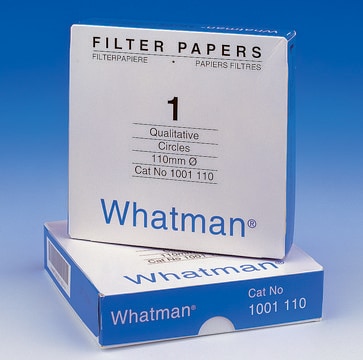WHA7184005
Whatman® nitrocellulose NC45 filter discs 0.45 μm pore size
white, hydrophilic, 100 ea, 50 mm diam
Synonym(e):
Whatman filter, Z746010, membrane filters, syringe filters
About This Item
Empfohlene Produkte
product name
Whatman® Nitrocellulose-Membranfilter, plain white, pore size 0.45 μm, diam. 50 mm
Materialien
plain white
Sterilität
non-sterile
Verpackung
pack of 100 ea
Hersteller/Markenname
Whatman 7184-005
Whatman Article No. 28420742 (US reference)
Durchmesser
50 mm
Porengröße
0.45 μm
Suchen Sie nach ähnlichen Produkten? Aufrufen Leitfaden zum Produktvergleich
Verwandte Kategorien
Leistungsmerkmale und Vorteile
- Narrow pore size distribution for improved surface capture and analysis.
- Low levels of extractables to ensure sample integrity.
Sonstige Hinweise
Rechtliche Hinweise
Signalwort
Warning
H-Sätze
P-Sätze
Lagerklassenschlüssel
11 - Combustible Solids
Hier finden Sie alle aktuellen Versionen:
Analysenzertifikate (COA)
Leider sind derzeit keine COAs für dieses Produkt online verfügbar.
Wenn Sie Hilfe benötigen, wenden Sie sich bitte an Kundensupport
Besitzen Sie dieses Produkt bereits?
In der Dokumentenbibliothek finden Sie die Dokumentation zu den Produkten, die Sie kürzlich erworben haben.
Unser Team von Wissenschaftlern verfügt über Erfahrung in allen Forschungsbereichen einschließlich Life Science, Materialwissenschaften, chemischer Synthese, Chromatographie, Analytik und vielen mehr..
Setzen Sie sich mit dem technischen Dienst in Verbindung.
